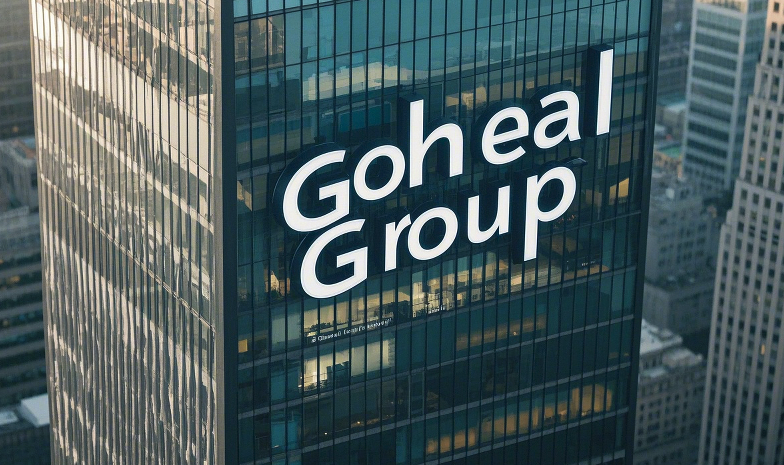"The ice is three feet thick, but it is not cold in one day; the huge bad debt is not born in one day." - Under the seemingly calm lake of the capital market, there are often hidden undercurrents, and the abnormal movement of accounts receivable is the first vortex to surface.
At the beginning of 2025, a well-known listed company had to temporarily suspend a controlling stake transaction that was about to be completed due to a sudden cash flow break, which shocked the entire market. Tracing back to the source, it turned out that a receivable of 260 million yuan on its books was identified as "hopeless to be recovered", which directly triggered a chain reaction of the company's information disclosure violations and financing defaults. Goheal has long been paying attention to the early signals of such capital structure distortions. In our view, although accounts receivable are a "gentle trap" on the asset list, they may become a hidden lever to pry the entire financial system.

American Goheal M&A Group
To see through this "gentle trap", we should not only look at the surface numbers, but also penetrate its deep structure and identify those financial operations that seem reasonable but actually hide risks. We call it "Five Abnormalities": five most common and most lethal signals of abnormal changes in accounts receivable. They are like five unnoticed fuses. Once triggered, they may cause the company to fall into a disaster cycle of capital operation.
Do you think the revenue is what it deserves? ——When the turnover rate becomes a time bomb
The first crisis of accounts receivable is often hidden in "time". Once the turnover days deviate too far from the industry standard, it is usually either incompetent management or there is something fishy behind it. For example, on the eve of a merger and acquisition, a certain technology company quietly extended its accounts receivable turnover period to 240 days, while the average of its peers was only 120 days. It seems to be the result of negotiations on the account period of major customers, but it is actually a "profit illusion" - sales are inflated, and the collection of payments is far away, which eventually exposes a series of related transactions. Goheal found in many due diligences on mergers and acquisitions that as long as the accounts receivable turnover days exceed the industry average by 50%, the risk scanning procedure should be forced to start. At the same time, companies whose accounts receivable account for more than 60% of revenue almost all hide "age black holes" that cannot be recovered.
Such companies are like travelers who are barely walking in the desert. They look energetic, but their water bags have long been cracked. They use the "soon to be credited" IOUs to make up for the numbers, but they have been unable to fulfill the market's trust in their "sustainable growth".
Are you seeing the customer, or the behind-the-scenes trader who controls the stage?
The second type of accounts receivable risk hides in the seemingly prosperous customer list. Don't rush to be blinded by revenue growth, first see if the change in customer concentration is abnormal. Goheal's research found that if the revenue share of the top five customers of a company suddenly increases by more than 20 percentage points in a short period of time, there is a high probability of a "closed loop" operation of related-party transaction packaging.
Especially before the merger and acquisition, the sudden addition of related customers is an extremely concealed financial "bath" technique. For example, a new energy enterprise added three "seemingly unfamiliar" customers in just one quarter, contributing 45% of the accounts receivable. It was eventually found that the actual controllers all came from the same actual controller system. What's more frightening is that the account period suddenly extended from 90 days to 270 days, and the reason behind it was to cooperate with the target company to sprint for the performance of the gambling agreement!
Such accounts receivable seem to be "money on the way", but in fact "the road has long been broken". On the stage of M&A transactions, they are more like a preview of an acquisition drama that is about to fail. And investors are just spectators who have not been told the truth.
The inverted financing cost may be a suicidal run in progress
There is a kind of enterprise that always takes more expensive money to wait for accounts that will never be collected. Goheal reminds investors to pay attention to such a risk mismatch: when the implied rate of return of accounts receivable is more than 3 percentage points lower than the financing cost, the enterprise is like a person running on an hourglass, and time drains life drop by drop.
The aging structure of a manufacturing listed company has deteriorated, and the proportion of accounts receivable with an age of more than 1 year has reached 37%. According to accounting standards, at least 50% of bad debt reserves should be set aside, but the company has continuously extended the period by "rolling and re-signing contracts", and 720 million yuan of bad debts have been successfully "laundered". This operation was not discovered until the acquirer conducted a cash flow stress test, when the assets had shrunk severely and the transaction was almost cut in half.
If you think that bad debts are just "less profit", you are wrong. The real danger is that these accounts receivable are like "invisible loans", which continue to drain the company's cash reserves, making it lose its self-protection ability at a critical moment, and eventually use stocks, equity, or even the entire control to repay past recklessness.
Is the surprise operation before the merger and acquisition a "bath" or a "setup"?
When a company frequently divests subsidiaries, sells assets, collects payments in a centralized manner, or applies for abnormal bank credit in the six months before the merger and acquisition, be extra vigilant. This is not always "optimizing the structure", but more likely a "smokescreen" to transfer accounts receivable.
In a large-scale state-owned merger and acquisition in 2025, we found that the target company suddenly divested three subsidiaries with serious accounts receivable before the transaction, with a total amount of up to 280 million yuan. On the surface, the asset structure is clear, but in fact, the "bad debt bomb" is moved from the left hand to the right hand. In the case of another private enterprise, a huge credit of 5 billion yuan was suddenly applied for before the merger and acquisition, of which 80% actually went to the affiliated company that "took over" the accounts receivable. This credit arrangement seems to enhance liquidity, but in fact it pushes the risk to the future moment of thunder.
If the acquirer does not conduct a reverse cash flow check, it will often find out after taking over the target that it has taken over not only the business, but also a lot of "promises that may not be fulfilled in the future."
The return of equity pledge may be the entrance to the next financial black hole
The last hidden path of accounts receivable changes is hidden in the equity pledge of the controlling shareholder. When the pledge ratio of the controlling shareholder exceeds 60%, the growth rate of new accounts receivable can be as high as 8% for every 10 percentage points increase. Goheal calls this the "amplifier effect of pledge leverage."
Even more shocking is that in some cases, the funds obtained from the pledge of controlling shareholders were actually used to subscribe to the accounts receivable notes of subsidiaries. For example, the major shareholder of a group raised 1.2 billion yuan, of which 900 million yuan was directly injected into its financial company to take over accounts receivable. This "left hand to right hand" capital operation not only pushed up the pledge risk, but also questioned the authenticity of the accounts receivable.
When the controlling shareholder of an enterprise must rely on accounts receivable to "make profits" and rely on pledge financing to "maintain superficial prosperity", this itself shows that the company has deviated from the track of sound operation. The return of risks may also be aimed at future shareholders and investors.
From "financial illusion" to "capital graveyard", who will sound the alarm?
We always believe that there must be traceable clues behind any sudden financial disaster. Goheal proposed a five-in-one early warning model of "turnover rate monitoring-related party penetration-cash flow stress testing-M&A abnormal scanning-pledge risk transmission", which is based on a systematic summary of hundreds of actual cases. We remind investors, acquirers, financial advisors and regulators: When any two of the above five risk signals appear at the same time, it is imperative to initiate a penetrating audit to avoid falling into the liquidity trap of capital operation.
Accounts receivable should not be a "container" for enterprises to conceal risks, but a "radar" for risk warning.
So, the next question is - with new tools such as AI, blockchain, and data sharing accelerating the penetration of corporate financial systems, can these "account risks" be intelligently predicted six months or even a year in advance?
This is the next topic that Goheal is exploring in depth.

Goheal Group
Are you ready again?
[About Goheal] Goheal is a leading investment holding company focusing on global mergers and acquisitions, focusing on the three core business areas of acquisition of listed company control, mergers and acquisitions of listed companies, and capital operations of listed companies. With its deep professional strength and rich experience, it provides enterprises with full life cycle services from mergers and acquisitions to restructuring and capital operations, aiming to maximize corporate value and achieve long-term benefit growth.